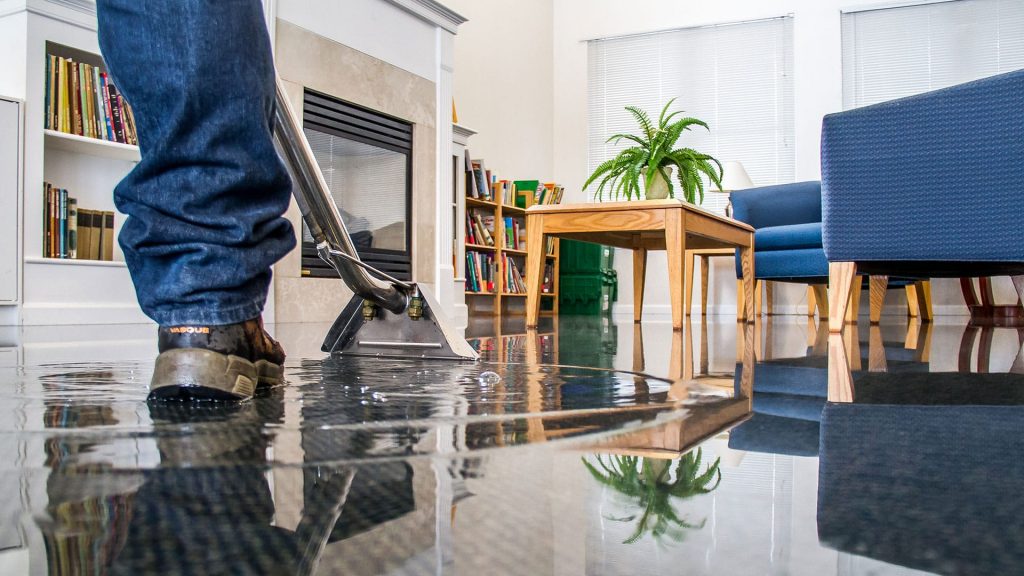Flood damage can be a devastating experience for homeowners, causing severe damage to structures, belongings, and even personal memories. Whether caused by a heavy rainfall, rising river waters, or a malfunctioning drainage system, floodwater can enter homes quickly, often without warning. The effects of flood damage can be overwhelming, but it’s important to understand the process of Flood damage restoration services to minimize long-term impacts. This article delves into flood damage restoration services, highlighting their importance, the steps involved, and the key considerations to ensure a successful restoration.
Understanding the Importance of Professional Flood Damage Restoration
When floodwaters invade your home, immediate action is crucial to prevent further damage. Standing water can compromise the structural integrity of your property and lead to serious issues such as mold growth, rot, and corrosion. In such scenarios, professional flood damage restoration services are indispensable. These services go beyond simply removing water—they encompass a comprehensive approach to drying, cleaning, disinfecting, and repairing your home. Professional restoration services use specialized equipment and techniques to ensure that your home is fully restored to its pre-flood condition, safeguarding both your property and your health.
The Role of Emergency Response Teams in Flood Damage Restoration
One of the key advantages of flood damage restoration services is their emergency response capability. Flooding can occur unexpectedly, often leaving homeowners with limited time to react. Professional restoration teams are available 24/7, offering rapid response times to help mitigate the damage. Their first priority is to assess the situation, establish safety protocols, and begin the water extraction process as quickly as possible.
The longer water sits in a home, the greater the potential for secondary damage, including mold and mildew growth, which can begin within 24 to 48 hours. Emergency response teams use powerful water extraction pumps, industrial-grade dehumidifiers, and air movers to remove standing water and dry out affected areas before the damage becomes irreparable.
The Flood Damage Restoration Process: Step by Step
Flood damage restoration involves several key steps, each of which is necessary for a full recovery. The restoration process begins with an assessment of the damage. A thorough inspection of the affected areas is conducted to evaluate the extent of the flooding and identify any potential risks to the property’s structural integrity. Restoration teams use moisture meters and infrared technology to locate hidden water pockets within walls, floors, and ceilings, ensuring that no damage is left undetected.
Once the assessment is complete, the water extraction process begins. Floodwaters are removed from the affected areas using industrial-grade water extraction equipment. Depending on the severity of the flood, water may be removed from carpets, upholstery, and hard flooring. Professional restoration teams then move to the drying phase, where powerful dehumidifiers and air movers are employed to dry out every inch of the affected space. This step helps prevent mold and mildew growth, which can quickly escalate in the presence of moisture.
After drying, the cleaning and sanitization phase begins. Floodwater can contain harmful bacteria, pathogens, and contaminants, so it’s important to disinfect and sanitize the affected areas. Restoration teams use specialized cleaning agents to remove any harmful substances and ensure a safe, healthy environment. They may also apply antimicrobial treatments to further prevent mold and mildew growth.
Once the cleaning and sanitizing are complete, the final step is repairing and restoring your home to its original condition. This may involve structural repairs, drywall replacement, carpet restoration, and repainting, depending on the severity of the damage. The goal is to make your home livable again while addressing any underlying issues that may have resulted from the flood.
The Challenges of Flood Damage Restoration
Flood damage restoration presents several challenges that require specialized knowledge and expertise. One of the main difficulties is the unpredictable nature of flooding. Floodwater may enter homes unexpectedly, leaving homeowners with limited time to prepare or respond. Additionally, floodwater can vary in its level of contamination. Clean water from a pipe break, gray water from a washing machine, or black water from a sewage backup all present different risks and require different methods of cleaning and restoration.
Another challenge is the potential for hidden damage. Even after water has been removed, there may still be pockets of moisture trapped within walls, under floors, or in other areas that are not immediately visible. These hidden pockets can lead to mold and structural damage if not thoroughly dried out. Professional flood damage restoration services use advanced moisture detection tools to locate and address these hidden risks before they can cause further damage.
Mold Prevention and Remediation in Flooded Homes
One of the most concerning consequences of flood damage is the potential for mold growth. Mold thrives in damp, warm environments, making flooded areas ideal breeding grounds. Mold can start to grow within 24 to 48 hours of water exposure, and if left unchecked, it can cause health problems and further damage to your home’s structure.
To prevent mold growth, flood damage restoration services include mold remediation as part of the process. Restoration teams use specialized equipment, including air scrubbers, dehumidifiers, and HEPA filters, to remove moisture and prevent mold from taking hold. If mold is already present, it is thoroughly removed using professional mold remediation techniques. This may involve the removal of contaminated materials like drywall, carpeting, and insulation, as well as cleaning and disinfecting affected surfaces to ensure a mold-free environment.
Working with Insurance Companies for Flood Damage Claims
Dealing with flood damage often involves working with your insurance company to file a claim and recover costs. Most homeowner’s insurance policies offer some form of coverage for water damage, but the specifics can vary depending on the cause of the flood and the terms of your policy. It is important to review your policy to understand what is covered and whether flood damage is included.
Many flood damage restoration companies work closely with insurance providers to streamline the claims process. They can provide detailed reports, photos, and estimates of the damage to assist with your claim. By working with both your restoration team and your insurance company, you can ensure that you receive the coverage you need to restore your home to its original condition.
Cost Considerations for Flood Damage Restoration
The cost of flood damage restoration can vary widely depending on several factors, including the extent of the damage, the size of the affected area, and the materials that need to be replaced. Minor water damage may cost a few hundred dollars to repair, while major flooding can lead to costs in the thousands.
It’s essential to address water damage as soon as possible to minimize costs. The longer you wait, the more likely it is that additional damage will occur, increasing the overall cost of restoration. Additionally, many flood damage restoration companies offer services that can help reduce costs, such as working with your insurance company to cover a portion of the repairs.
Conclusion
Flood damage restoration services play a crucial role in helping homeowners recover from the devastating effects of flooding. With the right professional services, floodwaters can be removed, affected areas can be dried and sanitized, and your home can be restored to its original condition. By acting quickly, working with experienced professionals, and taking preventive measures, you can reduce the long-term impact of flood damage and ensure your home remains safe and livable.
The key to effective flood damage restoration is acting quickly. Time is of the essence, and the faster you can get in touch with a professional restoration team, the better the chances are for minimizing damage. Whether you are dealing with minor water damage or extensive flooding, restoration experts have the knowledge, tools, and experience to restore your home to its former glory, providing peace of mind and ensuring a safe living environment for you and your family.




